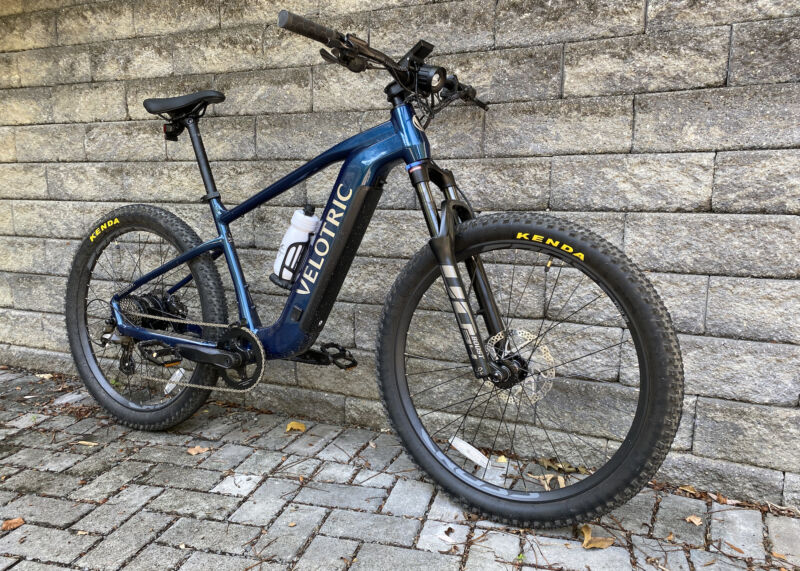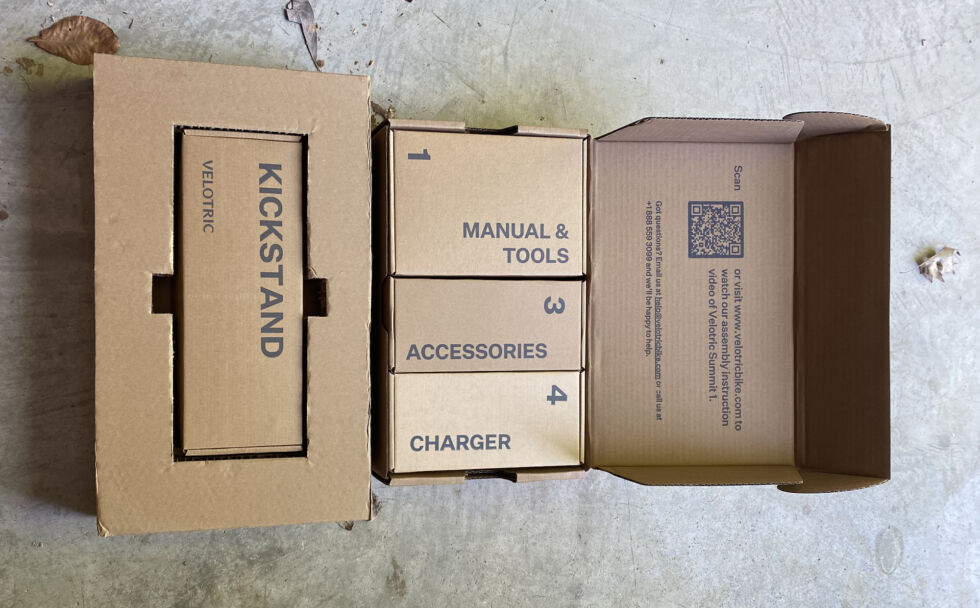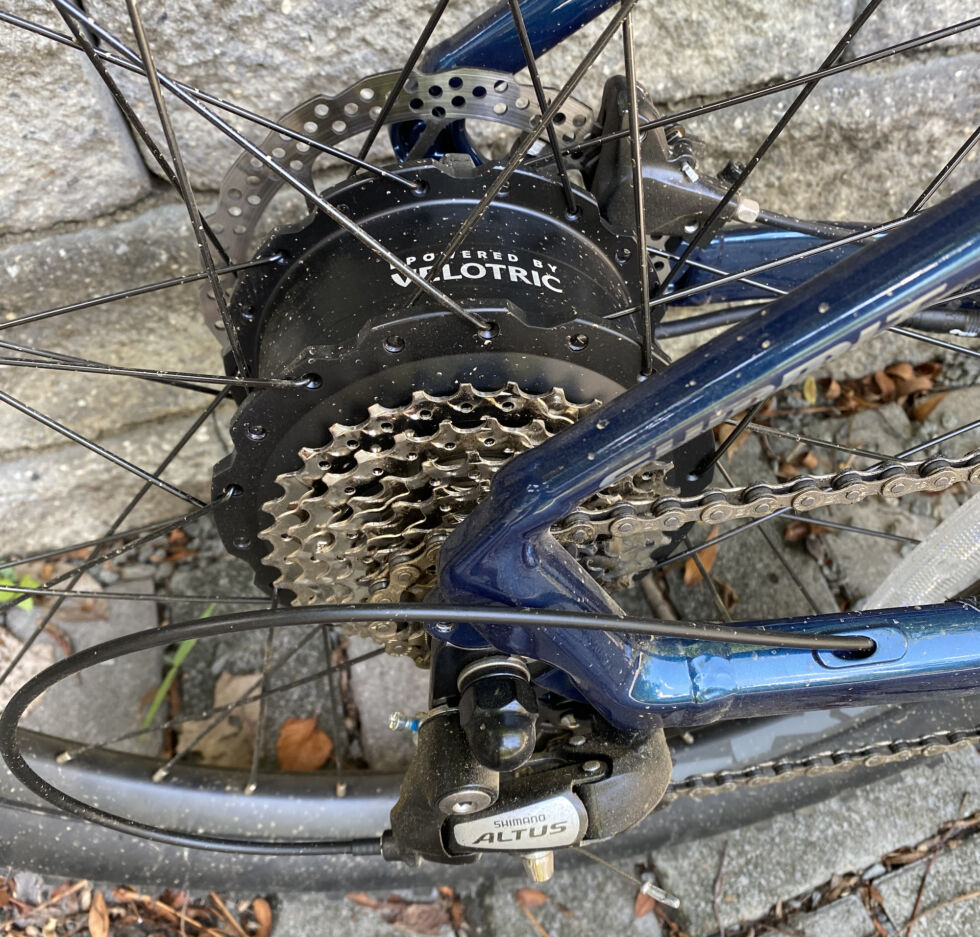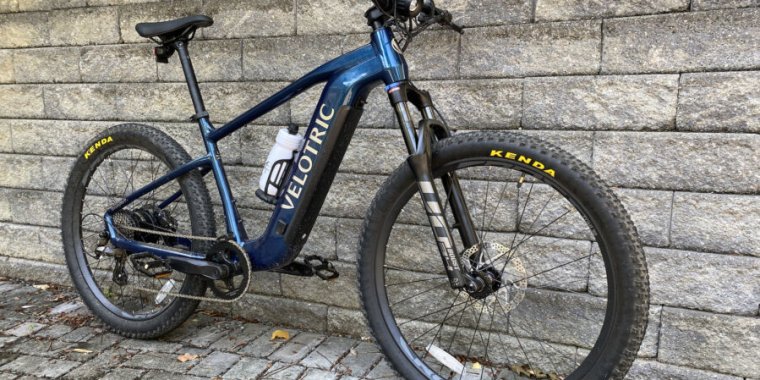
John Timmer
As I mentioned in another recent review, I’ve been checking out electric hardtail mountain bikes lately. Their relative simplicity compared to full-suspension models tends to allow companies to hit a lower price point without sacrificing much in terms of component quality, potentially opening up mountain biking to people who might not otherwise consider it. The first e-hardtail I checked out, Aventon’s Ramblas, fits this description to a T, offering a solid trail riding experience at a price that’s competitive with similar offerings from major manufacturers.
Velotric’s Summit 1 has a slightly different take on the equation. The company has made a few compromises that allowed it to bring the price down to just under $2,000, which is significantly lower than a lot of the competition. The result is something that’s a bit of a step down on some more challenging trails. But it still can do about 90 percent of what most alternatives offer, and it’s probably a better all-around bicycle for people who intend to also use it for commuting or errand-running.
Making the Summit
Velotric is another e-bike-only company, and we’ve generally been impressed by its products, which offer a fair bit of value for their price. The Summit 1 seems to be a reworking of its T-series of bikes (which also impressed us) into mountain bike form. You get a similar app experience and integration of the bike into Apple’s Find My system, though the company has ditched the thumbprint reader, which is supposed to function as a security measure. Velotric has also done some nice work adapting its packaging to smooth out the assembly process, placing different parts in labeled sub-boxes.

John Timmer
These didn’t help me avoid all glitches during assembly, though. I ended up having to take apart the front light assembly and remove the handlebars clamp to get the light attached to the bike—all contrary to the instructions. And connecting the color-coded electric cables was more difficult than necessary because two cables had the same color. But it only started up in one of the possible combinations, so it wasn’t difficult to sort out.
The Summit 1’s frame is remarkably similar to the Ramblas; if there wasn’t branding on it, you might need to resort to looking over the components to figure out which one you were looking at. Like the Ramblas, it has a removable battery with a cover that protects from splashes, but it probably won’t stay watertight through any significant fords. The bike also lacks an XL size option, and as usual, the Large was just a bit small for my legs.
The biggest visible difference is at the cranks, which is not where the motor resides on the Summit. Instead, you’ll find that on the rear hub, which typically means a slight step down in performance, though it is often considerably cheaper. For the Summit, the step down seemed very slight. I could definitely feel it in some contexts, but I’m pretty unusual in terms of the number of different hub and mid-motor configurations I’ve experienced (which is my way of saying that most people would never notice).

John Timmer
There are a number of additional price/performance compromises to be found. The biggest is the drivetrain in the back, which has a relatively paltry eight gears and lacks the very large gear rings you’d typically find on mountain bikes without a front derailleur—meaning almost all of them these days. This isn’t as much of a problem as it might seem because the bike is built around a power assist that can easily handle the sort of hills those big gear rings were meant for. But it is an indication of the ways Velotric has kept its costs down. Those gears are paired with a Shimano Altus rear derailleur, which is controlled by a standard dual-trigger shifter and a plastic indicator to track which gear you’re in.
The bike also lacks a dropper seat that you can get out of your way during bouncy descents. Because the frame was small for me anyway, I didn’t really feel its absence. The Summit does have a dedicated mountain bike fork from a Chinese manufacturer called YDH that included an easy-to-access dial that lets you adjust the degree of cushioning you get on the fly. One nice touch is a setting that locks the forks if you’re going to be on smooth pavement for a while. I’m not sure who makes the rims, as I was unable to interpret the graphics on them. But the tires were well-labeled with Kenda, a brand that shows up on a number of other mountain bikes.
Overall, it wasn’t that hard to spot the places Velotric made compromises to bring the bike in at under $2,000. The striking thing was just how few of them there were. The obvious question is whether you’d notice them in practice. We’ll get back to that after we go over the bike’s electronics.
#Summit #peak #mountain #bike #great #allrounder,
#Summit #peak #mountain #bike #great #allrounder
